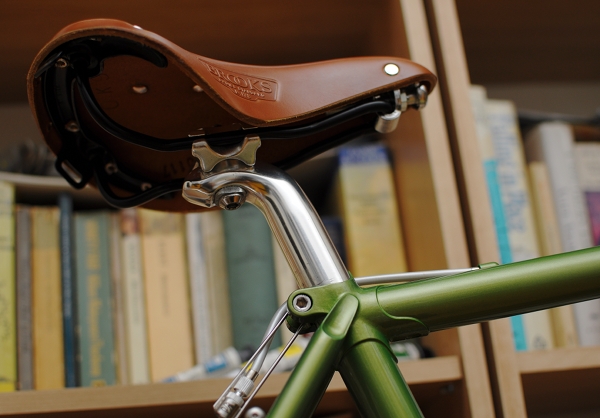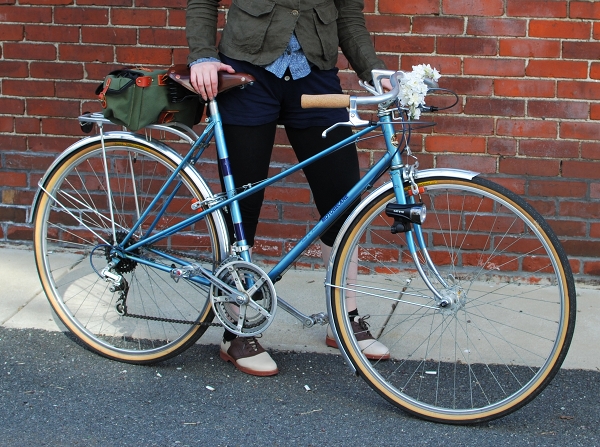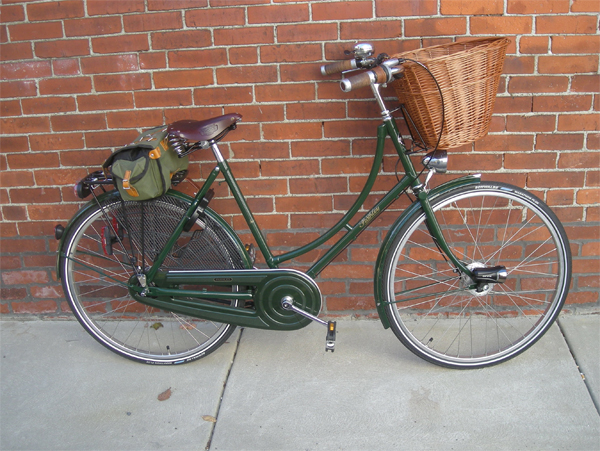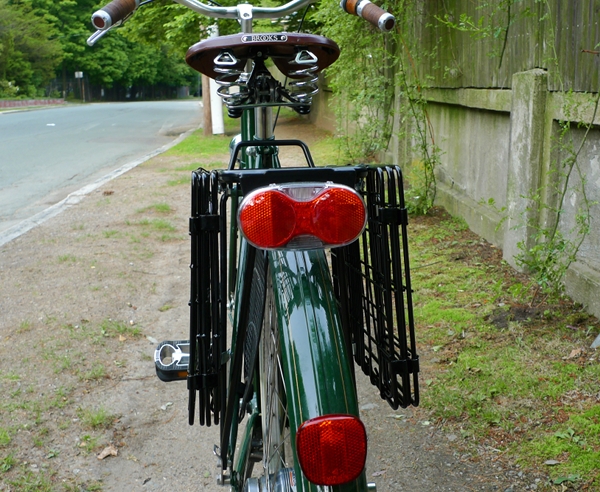 In theory, I love the look of shellacked cork grips and shellacked cork bartape. In practice, I found that the feel of shellacked cork is too glassy and slippery for my liking. The more layers of shellac, the nicer the cork looks... and the worse it feels to my hands. I really wanted to like it, but it just does not work for me. I prefer un-shellacked cork, shellacked cloth tape, leather grips, and even plastic grips.
In theory, I love the look of shellacked cork grips and shellacked cork bartape. In practice, I found that the feel of shellacked cork is too glassy and slippery for my liking. The more layers of shellac, the nicer the cork looks... and the worse it feels to my hands. I really wanted to like it, but it just does not work for me. I prefer un-shellacked cork, shellacked cloth tape, leather grips, and even plastic grips. Inexpensive cloth tape with just a couple of thin layers of shellac. Not as fancy and shiny, but my hands prefer it.
Inexpensive cloth tape with just a couple of thin layers of shellac. Not as fancy and shiny, but my hands prefer it. The "Special" version of Brooks saddles. I love the look of Brooks "Special" saddles with their pretty copper rivets - so much so, that last summer I paid a bit extra for a Flyer Special for my vintage Motobecane mixte, instead of getting the Standard. I have since learned that the Special versions of the saddles are apparently made of a thicker leather. In theory this is a good thing, as the saddles are more durable. In practice, it has proven impossible for me to break in my Flyer Special! A year later, and it still hurts.
The "Special" version of Brooks saddles. I love the look of Brooks "Special" saddles with their pretty copper rivets - so much so, that last summer I paid a bit extra for a Flyer Special for my vintage Motobecane mixte, instead of getting the Standard. I have since learned that the Special versions of the saddles are apparently made of a thicker leather. In theory this is a good thing, as the saddles are more durable. In practice, it has proven impossible for me to break in my Flyer Special! A year later, and it still hurts. The B17 Standard on my Hillborne has less of a "wow" factor, but I don't care: It took me a week to break in this saddle!
The B17 Standard on my Hillborne has less of a "wow" factor, but I don't care: It took me a week to break in this saddle! Last year, Honjo fluted fenders seemed like such a beautiful choice for Marianne. But while they truly are picture-perfect, they did not stay that way for long once I began riding my bike. The long smooth fluted surfaces of these fenders showcase every micro-scratch, and after a few months mine began to look pretty beat up. By contrast, the Co-Habitant's hammered Honjos disguise scratches and dents, as they are essentially "pre-dented". Though I prefer the look of the fluted model, I regret having bought such expensive fenders only to have them look battered. You live, you learn.
Last year, Honjo fluted fenders seemed like such a beautiful choice for Marianne. But while they truly are picture-perfect, they did not stay that way for long once I began riding my bike. The long smooth fluted surfaces of these fenders showcase every micro-scratch, and after a few months mine began to look pretty beat up. By contrast, the Co-Habitant's hammered Honjos disguise scratches and dents, as they are essentially "pre-dented". Though I prefer the look of the fluted model, I regret having bought such expensive fenders only to have them look battered. You live, you learn. And then of course there is the lovely front wicker basket - that ultimate symbol of civilised, romantic cycling. Alas, it was not meant to be: experience has shown that I prefer the front of my bike to be free of large wicker objects, no matter how beautiful.
And then of course there is the lovely front wicker basket - that ultimate symbol of civilised, romantic cycling. Alas, it was not meant to be: experience has shown that I prefer the front of my bike to be free of large wicker objects, no matter how beautiful. Instead, these rear folding baskets have proven to be just the thing for me. Not as cute as a wicker basket in the font, but they suit me better.
Instead, these rear folding baskets have proven to be just the thing for me. Not as cute as a wicker basket in the font, but they suit me better.In describing my experiences, I by no means suggest that you should stay away from any of the products that did not work for me. My point is simply that you never know whether you will like something until you actually use it - regardless of how stunning it looks in pictures, or even of how obvious its benefits seem in product reviews. There is no way around personal experience, and bicycles are no exception.
0 comments:
Post a Comment